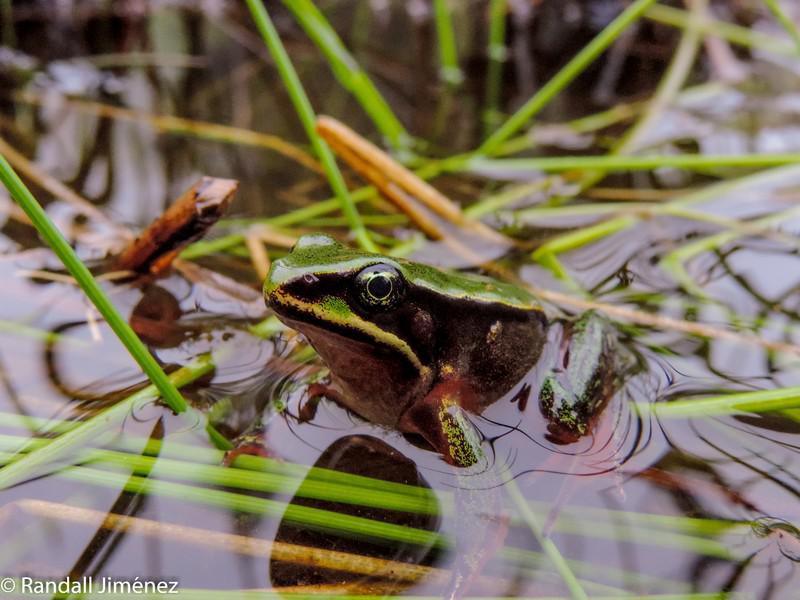Randall Jimenez Quiros
This project aims to provide knowledge of the skin microbiome from amphibians that are capable of persisting in their habitat with Bd and to initiate a conservation project with local communities to better protect the habitat of the threatened relict population of Lithobates vibicarius.

Lithobates vibicarius juvenile.
In Costa Rica (CR) many, mainly highland amphibians are in decline and are threatened by extinction due to chytridiomycosis, an emerging disease caused by the skin-fungal pathogen Batrachochytrium dendrobatidis (Bd), and it’s devastating effects likely are amplified by interactions with anthropogenic threats (i.e. habitat alteration, climate change). Therefore, there is an urgent need of developing conservation actions that help mitigate the impact of Bd in susceptible populations and allow them survive with the pathogen in their habitat.
Due to the urgent need for effective amphibian conservation strategies, microbiome has emerged as a promising new area of inquiry, with potential applications that can improve the conservation and disease management. Despite the increasing awareness of the microbiome’s contribution to host health, the central question, how internal host and external environmental traits modulate the microbiome composition and function still barely known. Thus, first a solid understanding about the structure, dynamics and ecology of the microbiome of amphibians, as well as the effects of intrinsic and extrinsic factors on the natural variation of microbiome composition is needed in order to understand the effects of dybiosis on pathogen emergence and health.
This project aims to provide knowledge of the skin microbiome from two amphibian models (Lithobates vibicarius and Isthmohyla pseudopuma) from the highlands of CR, with different Bd infection history and capable of persisting in their habitat with Bd. By doing this, we plan to use the information as tools to help elaborate conservation strategies for Bd-threatened species. We will also involve a local organization and community in a long-term conservation project to better protect the habitat of the threatened relict population of Lithobates vibicarius.
We will use a standardized field approach that will allow us understand 1) the skin microbiome between species, and across sites and time, 2) the effect of abiotic factors and habitat alteration on host-microbiota, 3) the variation of microbiota across amphibian development, 4) the relationship between the skin bacterial community with those from the pond environment and 5) the functional importance of taxonomic microbial groups and their relative abundance in the face of Bd-infection. This knowledge will have relevant implications in the conservation of Costa Rican amphibians threatened by Bd outbreaks, and for other Bd-threatened species in the tropics.
The project will give the opportunity to have a collaboration between conservation biologists and veterinarians from Costa Rica and Germany to provide relevant knowledge for the amphibian conservation in other regions.